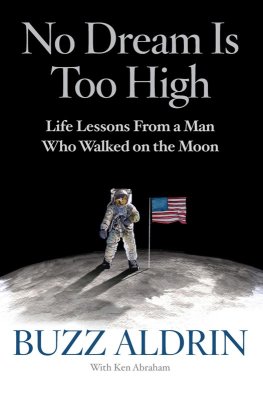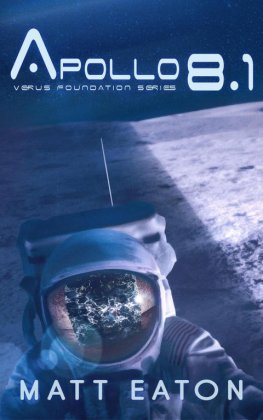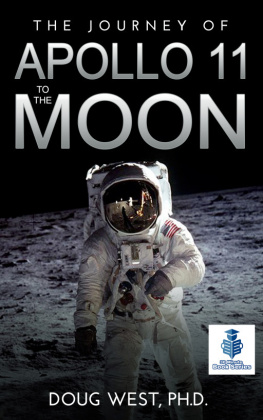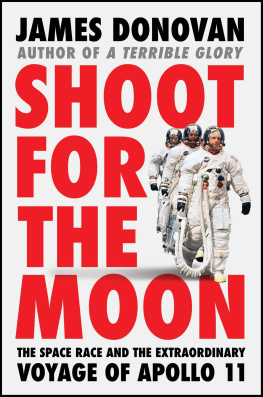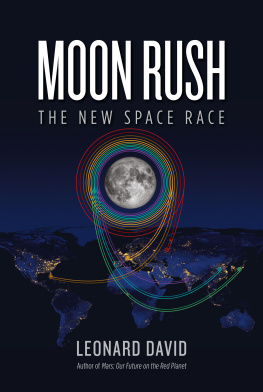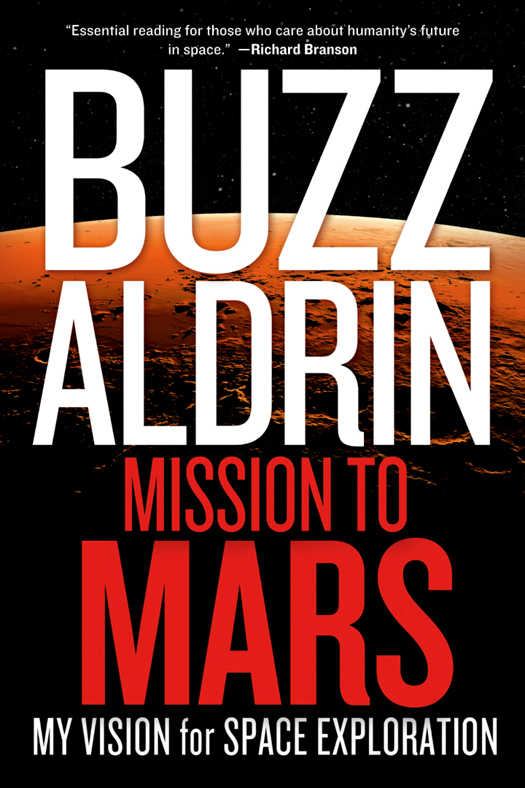ALSO BY THIS AUTHOR
Return to Earth
Men from Earth
Encounter with Tiber
The Return
Magnificent Desolation
FOR CHILDREN
Reaching for the Moon
Look to the Stars
Published by the National Geographic Society
1145 17th Street N.W., Washington, D.C. 20036
Copyright 2013 Buzz Aldrin Enterprises, LLC. All rights reserved. Reproduction of the whole or any part of the contents without written permission from the publisher is prohibited.
eISBN: 978-1-4262-1018-1
Library of Congress Preassigned Control Number: 2012953599

The National Geographic Society is one of the worlds largest nonprofit scientific and educational organizations. Founded in 1888 to increase and diffuse geographic knowledge, the Societys mission is to inspire people to care about the planet. It reaches more than 400 million people worldwide each month through its official journal, National Geographic, and other magazines; National Geographic Channel; television documentaries; music; radio; films; books; DVDs; maps; exhibitions; live events; school publishing programs; interactive media; and merchandise. National Geographic has funded more than 10,000 scientific research, conservation and exploration projects and supports an education program promoting geographic literacy.
For more information, visit www.nationalgeographic.com.
National Geographic Society
1145 17th Street N.W.
Washington, D.C. 20036-4688 U.S.A.
For rights or permissions inquiries, please contact National Geographic Books Subsidiary Rights:
13/QGF-LPH/1
v3.1
CONTENTS

CHAPTER ONE
The View From Air Force One
CHAPTER TWO
Time for Decision-making: Call for a Unified Space Vision
CHAPTER THREE
Your Space: Building the Business Case
CHAPTER FOUR
Dreams of My Moon
CHAPTER FIVE
Voyage to Armageddon
CHAPTER SIX
The March to Mars
CHAPTER SEVEN
Homesteading the Red Planet
CHAPTER EIGHT
The Clarion Call

Andrew Aldrin and his father, Buzz Aldrin, 2012
()
FOREWORD
BY ANDREW ALDRIN

This book represents a journey of its own. It began the moment my father set foot back on Earth. Since that time he has been constantly thinking about how people from Earth will inhabit another planet. What you will read is a vision of the extension of humanity to Mars, to be sure. But the strength of my fathers vision is the pathway as much as it is the planet. It is about the journey as much as the destination.
I was there for most of it. I remember some of it.
My earliest recollections are probably of me sitting around the kitchen table looking at these fantastic models of space planes, and understanding almost nothing about the space shuttle that was going to be the next generation of spacecraft intended to fly people into orbit. There was an impassioned discussionwell, more of a monologueregarding early designs for a space shuttle system that had a piloted flyback booster for the first stage and why we needed to separate crew from cargo. That is about all I remember. I was 11 and had nothing to contribute, except for a willing ear.
And that is the way it went for the first 20 years or so of our conversations about space travel. I listened, and I learned, while my dad talked about space.
Some of these conversations involved the great thinkers of our time. When my dad came up with an idea, he would seek out the people who were doing the most creative thinking at the moment. They would usually pick up the phone when he called. At one point he began to look critically at the design of the space station. The structure just didnt seem efficient. I recall that he became enamored with geodesic structures, so he naturally called on Buckminster Fuller. Now that was an amazing set of conversations. At the time it seemed like competing soliloquies. But I began to see many more of Buckys ideas creep into the design.
And it is not just the well known and famous who captured my fathers attention.
If anyone had an idea that fit in my dads vision of the future, he would go and talk to them. Often he became the tireless advocate for their ideas. He was building an architecture of systems. If someone had an element that fit in his structure, he wanted to use it.
You will see a lot of other peoples elements in the pages of this book. But the system, in the broadest sense possible, is truly his own.
All of the pieces fit together. That may be the real virtue of this book. There are hundreds, probably thousands, of people who have talked with my father, read his articles, heard his speeches, and watched him on TV. Each of them contributed a snippet to Dads overall vision. Sometimes the snippets seemed impossibly disjointed. There was just so much he was trying to articulate, and so little time in one conversation, speech, or interview.
But I recall one conversation with Brent Sherwood, a space architect now at the Jet Propulsion Laboratory, who really does see the big picture. My dad had an incomprehensibly complex diagram of how humans could get from where they were to Mars. Reasonably intelligent people could disagree over many of the points in the diagram. And they did. But afterward Brent told me that, despite his technical differences, it all hangs together. And he went on to say that Buzz may be the only person who has all of the pieces to the puzzle.
This book is the first time my father has attempted to put the entire puzzle together in one place.
My dad has spent a great deal of time conversing about space with many people. This book is a continuation of that tradition. The basis of these chapters began with the 40 years of publications, interviews, and presentations my dad has made. Many of these have been carefully collected by the people who work closely with my dad. A special mention should be made of the work Christina Korp and Rob Varnas have done in collecting and organizing the considerable library of my fathers works.
But the real heart of this book is a series of conversations between my dad, Leonard David, and me over the better part of 2012, all dedicated to the writing of this book. These conversations have been wide ranging, incredibly insightful, entertaining, frustrating, enlightening, and hopelessly disorganized. It is a testament to Leonards perseverance that he has been able to organize the discussions into an entirely coherent manuscript which, I believe, offers the clearest, most comprehensive account of my fathers views on spaceflight.


